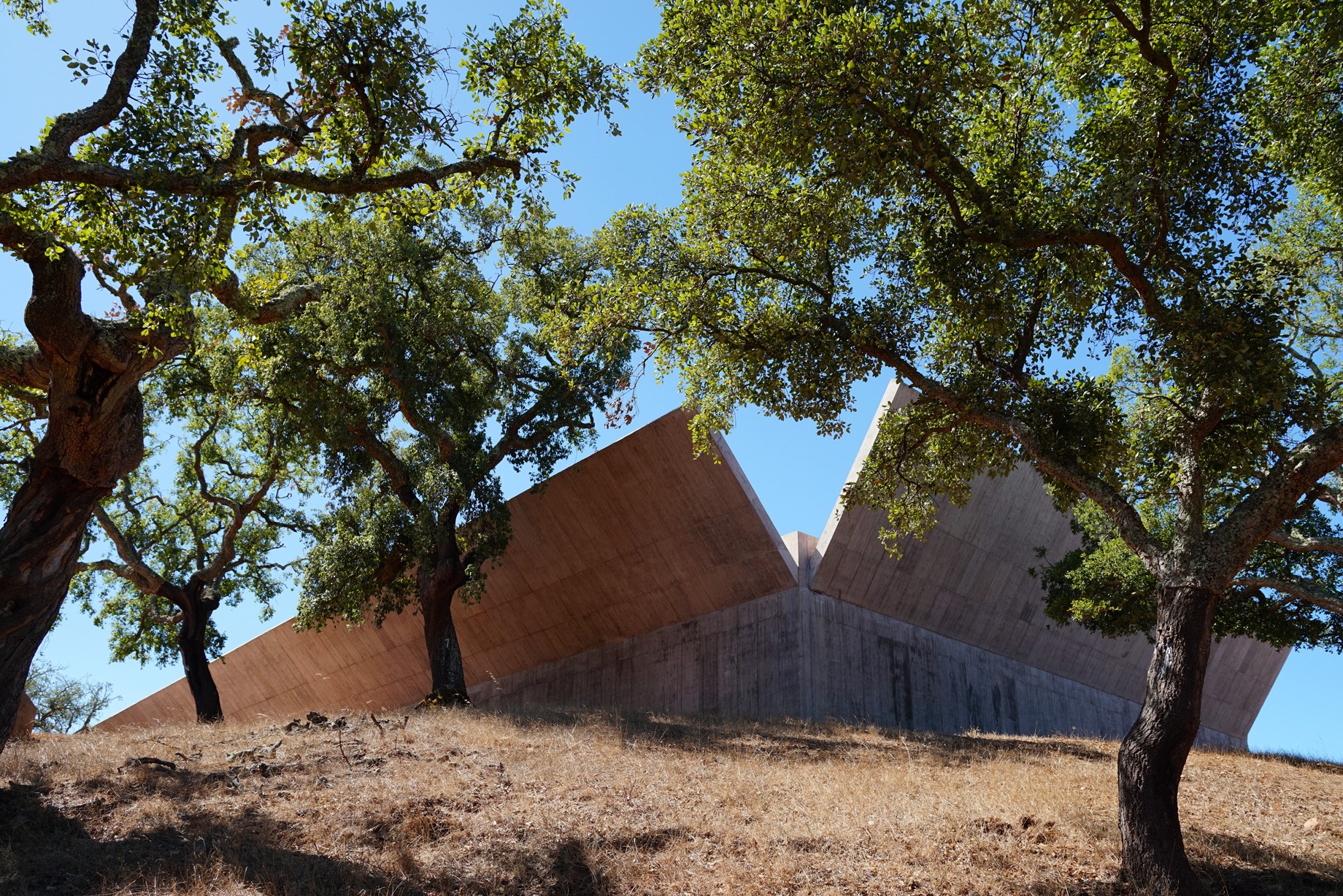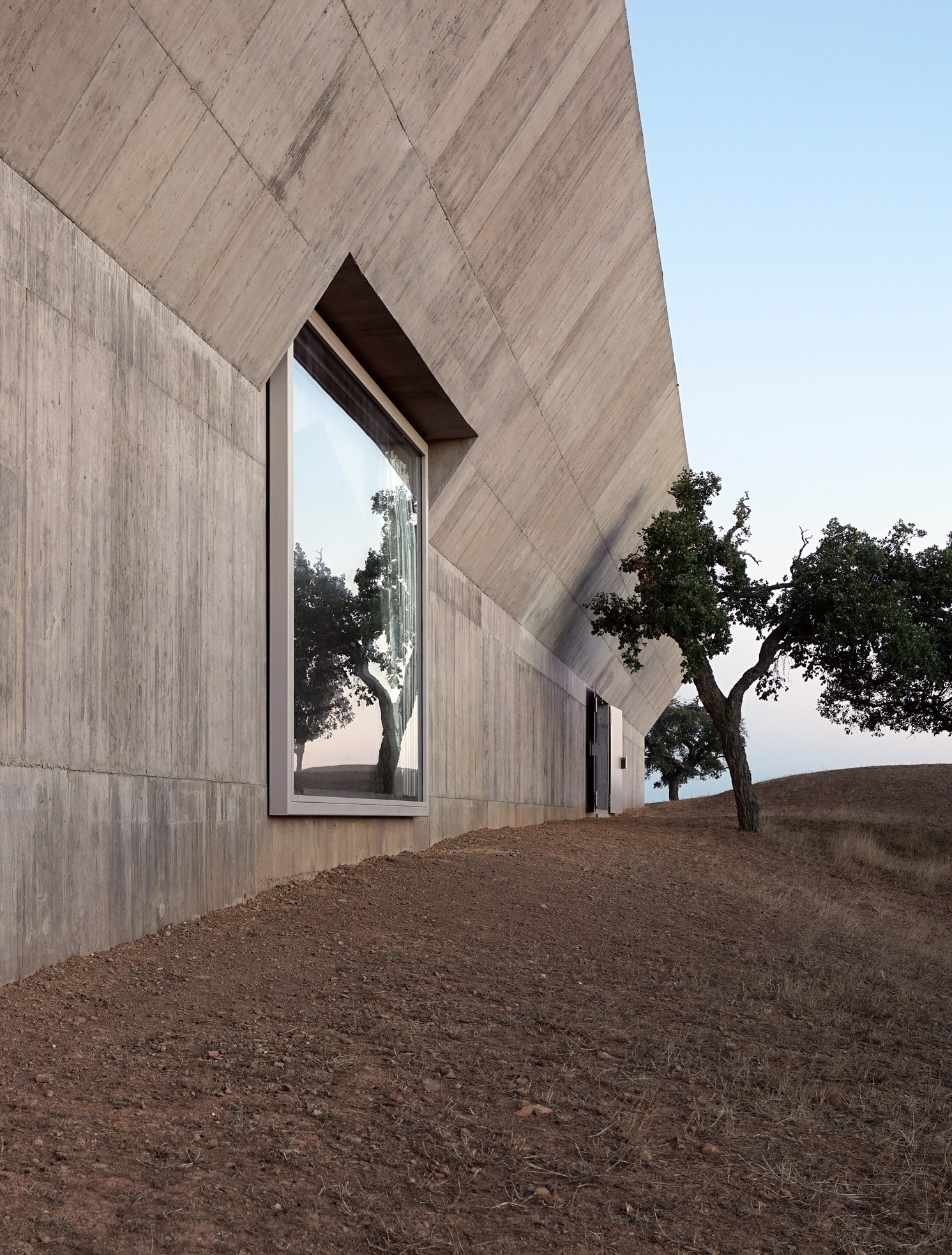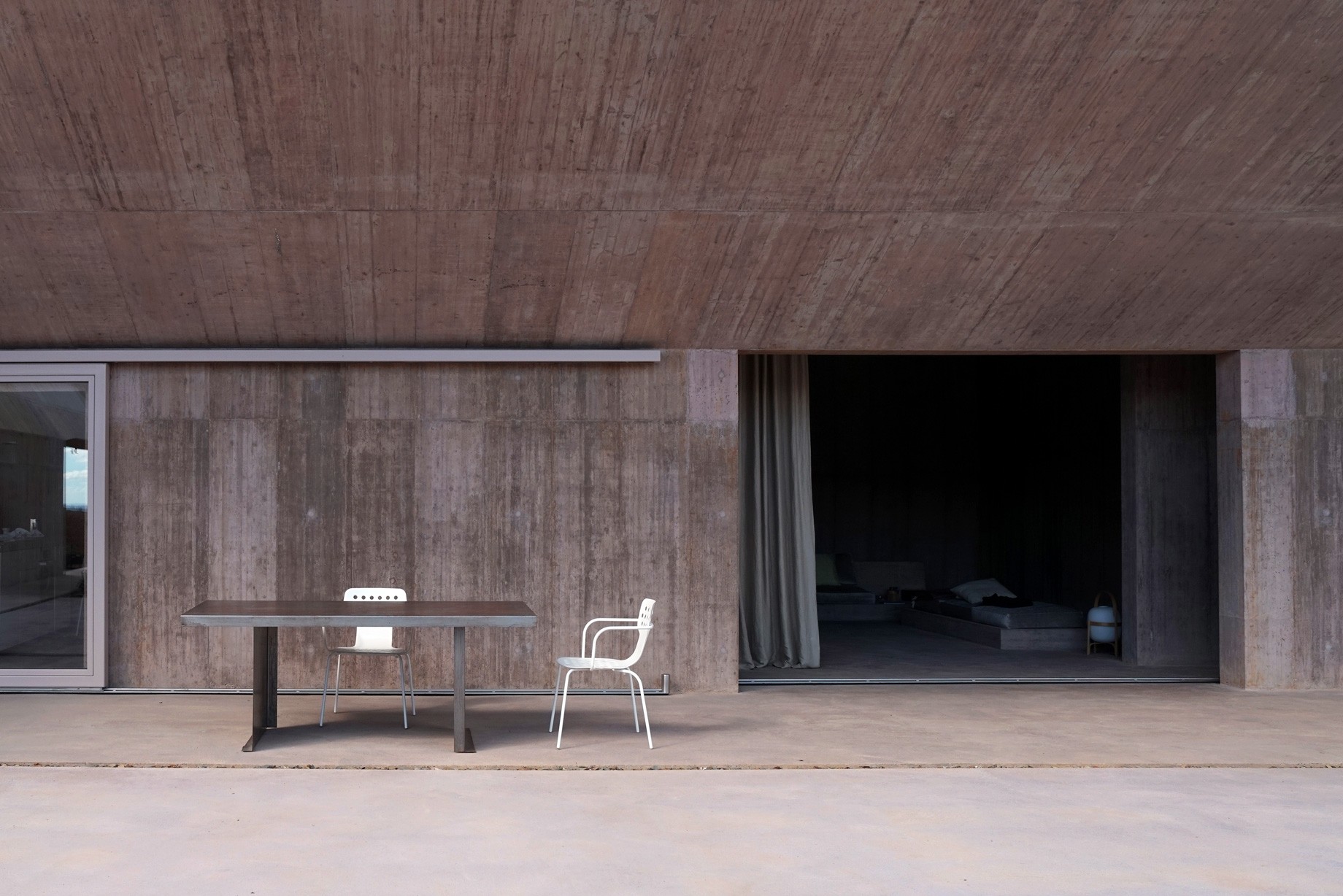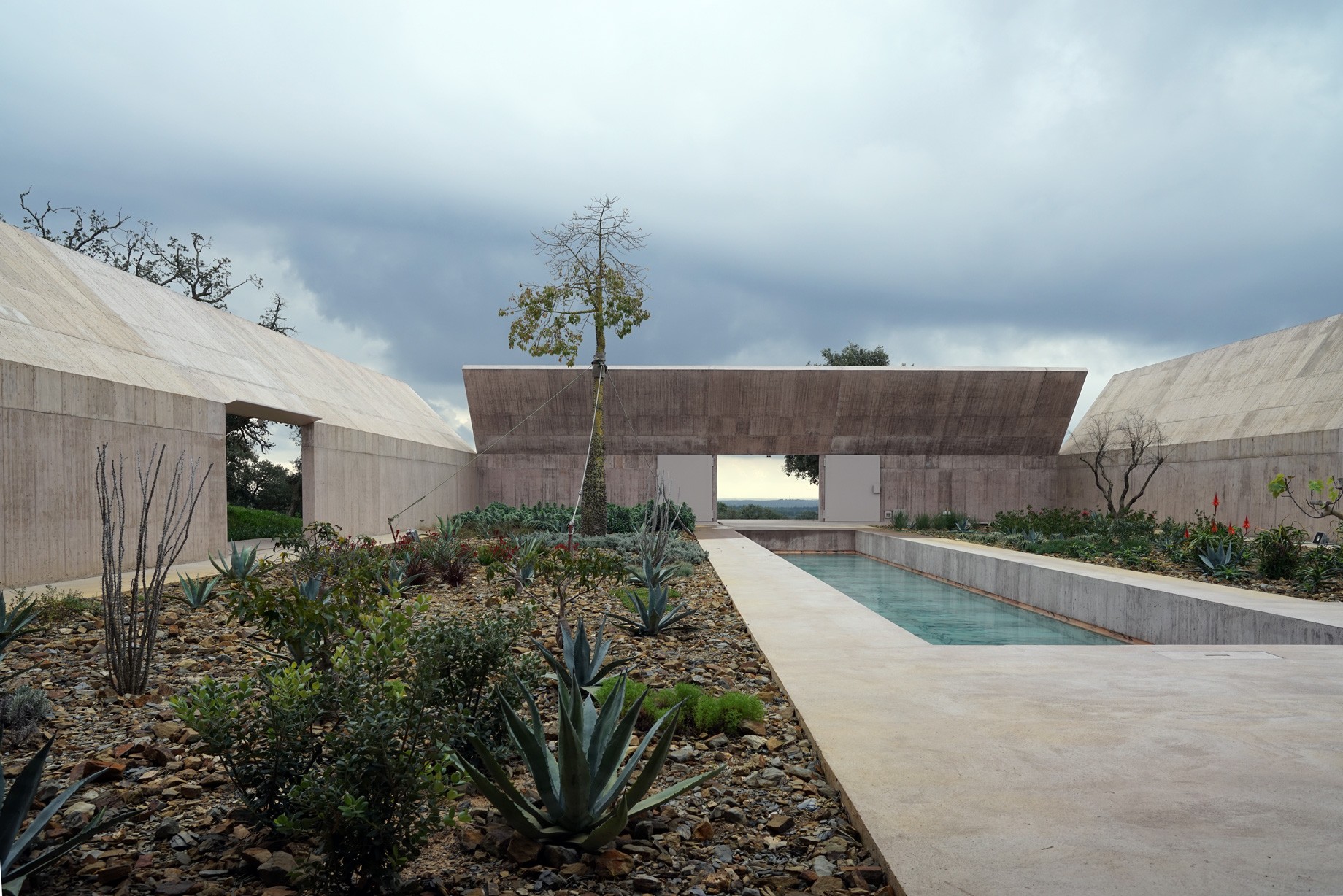VALERIO OLGIATI’S TIMELESS VILLA ALÉM
The boundary between inside and out has been a crucial site of architectural innovation at least since the Modernists began wrapping buildings in glass. And while the seamless transitions of Mies and co. gave way to the hard edges and indeterminate interiors of subsequent practitioners (think Giorgio Grassi and Aldo Rossi’s 1971 design for San Rocco), few architects have managed to have it both ways.
Enter Valerio Olgiati, whose Villa Além in the scrubby hills of Portugal’s Alentejo region is somehow both radically open to its surroundings and hermetically sealed off from them. Tall walls of unadorned concrete enclose the long, low-slung compound (which Olgiati designed for himself and finished in April 2014), making it feel more rampart than residence. And yet nature permeates the architecture. The windows and entryways are few but gigantic, bringing the reds, browns, and greens of the rural landscape in through the perimeter. Inside, the majority of the plotis given over to a spacious courtyard framing the sky, whose vast stretches of poured-concrete paving delimit a long, narrow pooland two large garden plots.
The home is at once shot through with its environment and totally alien to it — a paradox that reflects Olgiati’s nuanced ideas about the importance of setting in a building’s design. “This house was not born out of what people call context,” says the Swiss architect, by which he means the site’s topography and the local architectural traditions. But the building’s “context in a bigger sense,” as Olgiati calls it — from the region’s climate to the way the sun falls on the landscape — “deeply influenced the design of this house.”
Indeed, the more one looks at this building, the more its uncanny reciprocity with its surroundings becomes apparent. One photo (taken by the architect himself) shows one of the diagonal overhangs that crown the outer walls tracing the outline of a nearby cork oak tree. That same image reveals that the site’s red earth proceeds directly up to the building envelope. Nothing mediates the interface between land and architecture — it is as raw and honest as anything Olgiati has built.
The sheer bareness of the home puts the lush inner court in sharp relief. The garden even has a prelapsarian feel to it, with its opulent floral display set against the giant fortress walls, a spiritual allusion that Olgiati does nothing to dispel with his other photographs of the property. One shows a herd of sheep grazing just outside the long, squat compound, recalling famous depictions of Noah’s Ark.
These ancient evocations take a turn for the primordial in the building’s few interior spaces: dark, heavy, minimally furnished rooms in the same raw concrete. These spaces are caves — simulations of the most primitive form of human shelter. But, according to the architect, such associations are purely coincidental. “I never base my projects on historical sources,” he says. “I would like to make something that’s radically new, something that is invented. I’m aiming for an architecture that has no origins and thus is non-referential.” With or without an origin story, Villa Além is certainly an outlier, built in the present but not of it — architecture truly outside of its time.
Taken from PIN–UP 18, Spring Summer 2015.
Photography by Valerio Olgiati.








